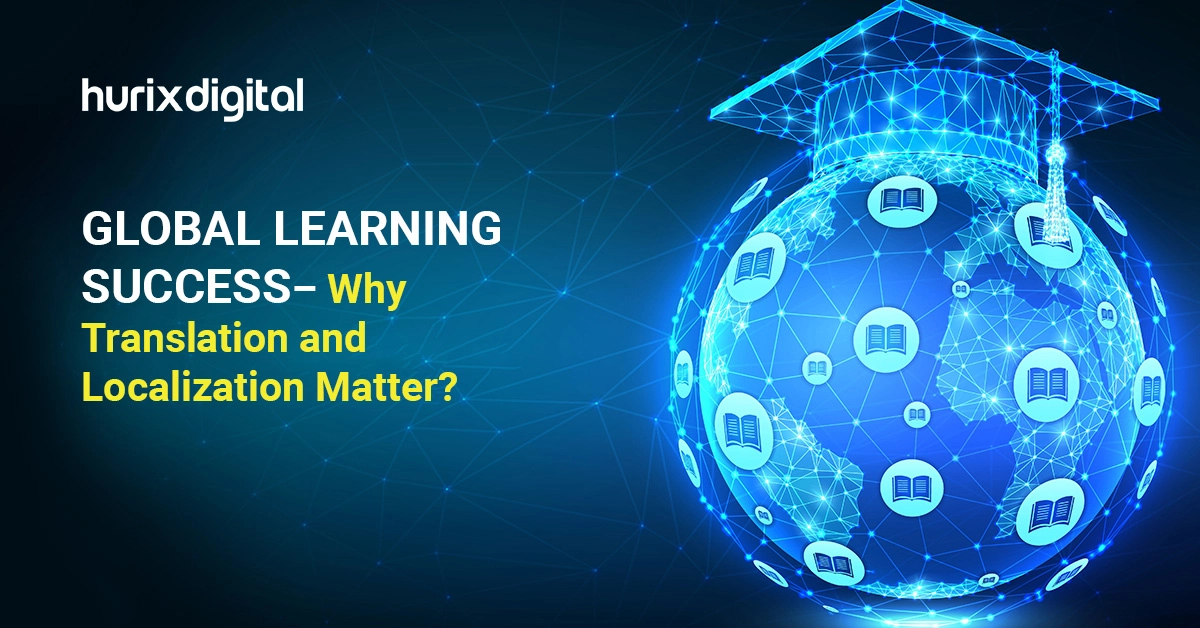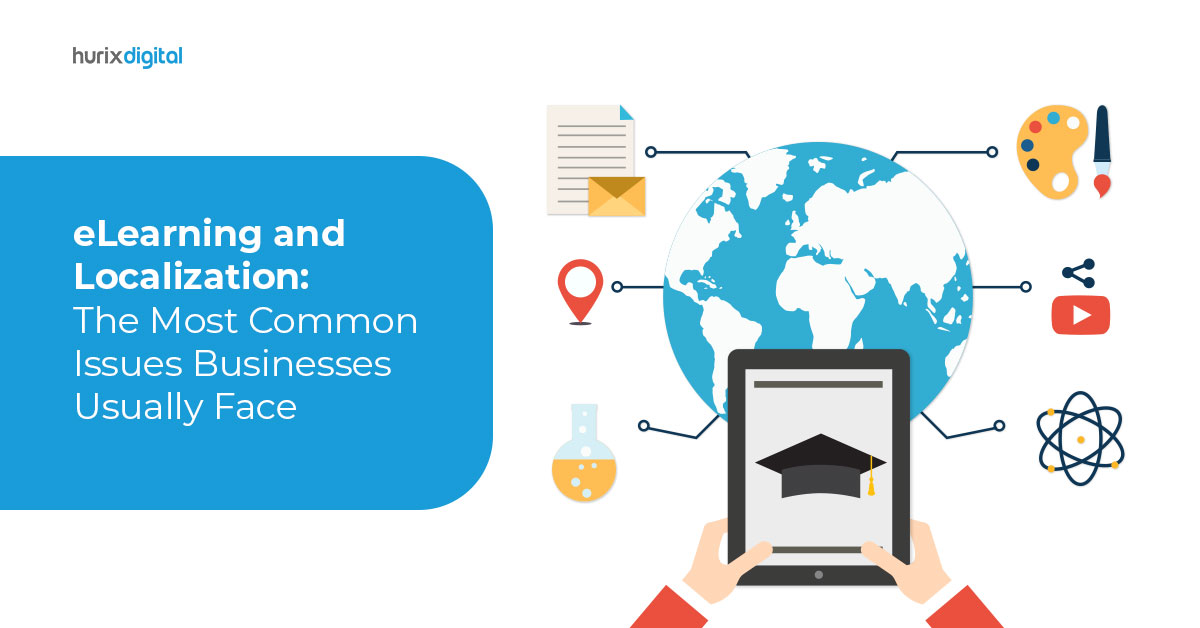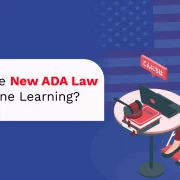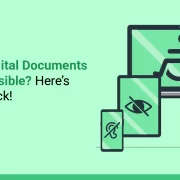
Global Learning Success – Why Translation and Localization Matter?
Summary
This blog highlights the importance of translation and localization in global training, emphasizing best practices to enhance engagement, retention, and compliance for diverse workforces.
During the early days of the COVID-19 pandemic, many speculated that globalization was ending, with trade, capital, and people flows dropping sharply.
Globalization, however, has not only rebounded but is prospering, according to NYU Stern’s Center for the Future of Management’s DHL Global Connectedness Index. International travel increased in 2022 as trade, finance, and information movements worldwide surpassed pre-pandemic levels.
Chief Learning Officers guarantee that learning and development initiatives can scale successfully across geographies as they grow internationally.
The difficulty is keeping training at a constant quality level while modifying it for various linguistic and cultural settings. This is where localization and translation services come into play, ensuring international L&D initiatives stay coherent and applicable for diverse audiences.
The following sections will discuss how business translation and localization services can scale L&D globally.
Table of Contents:
- Translation and Localization – What is it and Key Differences
- Why are Translation and Localization Crucial for Global L&D?
- Best Practices for Scaling L&D with Translation and Localization Services
- Begin with a Thorough Needs Analysis
- Make Use of Expert Localization and Translation Services
- Include Subject Matter Experts from the Area
- Use a Content Management System that Is Centralized
- Test and Validate Localized Content
- Offer Constant Assistance and Materials
- Monitor and Measure Effectiveness
- The Key Takeaway
Translation and Localization – What is it and Key Differences
In the context of global L&D, translation and localization services play pivotal roles in delivering consistent training across regions. While these terms are often used interchangeably, they serve distinct purposes, which are both crucial for global workforce training to ensure content relevance and clarity.
- Translation: Focuses purely on converting content from one language to another. It’s about maintaining the original meaning in different languages without altering context. This is essential when the content needs to be understandable in various languages but doesn’t consider cultural or regional differences.
- Localization: This step goes further by modifying the content to conform to societal conventions, regulatory constraints, and local culture. To make the content appealing to the intended audience, changes to the language and any images, examples, and references used in the training must be made.
The table here discusses the key points of difference between translation and localization:
| Translation | Localization | |
| Focus | Language conversion | Cultural and contextual adaptation |
| Purpose | Convey original meaning in a new language | Tailor content to local preferences and regulations |
| Adaptation | Minimal (language only) | Extensive (includes imagery, examples, formatting, etc.) |
| Best Use Case | When language clarity is the main goal | When content needs to align with local cultural nuances |
Also Read: Measuring the Effectiveness of Translated and Localized Workforce Learning Content
Why are Translation and Localization Crucial for Global L&D?
Delivering uniform and efficient training across many geographies to provide employees with the tools they need to succeed is known as global Learning & Development (L&D). As highlighted by LinkedIn Learning’s 2023 Workplace Learning Report, L&D is central to organizational success by focusing on people and skills. To achieve this globally, translation and localization services play a critical role. Here’s why:
1. Consistency in Training
Translation and localization in learning programs guarantee the preservation of fundamental learning objectives and corporate values in various languages and cultural contexts. Since English is the native language of just 20% of the world’s workforce, linguistic barriers must be addressed.
While localization modifies information to accommodate cultural quirks and ensures that it appeals to workers across geographies, translation services for training supply the linguistic correctness required for comprehension.
Using a dual approach, businesses can successfully handle language challenges, maintain the integrity of vital messaging, and maintain uniform training outcomes.
2. Improved Engagement and Retention
Employee engagement with training materials is higher when delivered in the learner’s native language and customized to their cultural environment. Localization improves retention and comprehension by making the content relatable and relevant.
Workers who personally relate to the training are frequently more driven to finish the courses, which enhances learning objectives and general performance.
Considering that 93% of businesses worry about employee retention, developing interesting training initiatives is essential to retaining top talent.
3. Regulatory and Compliance Considerations
Training programs must comply with the complicated web of local laws and regulations that global firms must enforce. Localization lowers the possibility of compliance problems by assuring that training materials are customized to satisfy unique legal and regulatory needs in each country.
This proactive strategy encourages a culture of accountability and adherence to local norms while assisting organizations in protecting themselves against future legal difficulties.
Also Read: The Importance of Translation and Localization in Workforce Learning
Best Practices for Scaling L&D with Translation and Localization Services
Localization and translation must be approached strategically if Learning & Development programs are to be scaled internationally.
To guarantee successful implementation, consider the following translation and localization best practices in L&D:
1. Begin with a Thorough Needs Analysis
Do a thorough needs assessment to determine your varied learner base’s precise linguistic and cultural requirements before beginning translation and localization. This will make it easier to decide which resources to translate first and guarantee that the intended audience receives important training materials properly.
2. Make Use of Expert Localization and Translation Services
Hire qualified localization and translation specialists aware of the subtle differences in language and culture. By doing this, you can be confident that your material is appropriately translated and culturally relevant. Therefore, you can prevent misunderstandings that may result from literal translations.
3. Include Subject Matter Experts from the Area
Engage subject matter experts from the area in the localization procedure. Their knowledge can be used to modify training materials to be more relevant and effective by considering local customs, laws, and cultural norms.
4. Use a Content Management System that Is Centralized
Use a centralized content management system for easy updates and support for multiple languages. This will speed up the translation process and ensure that every employee has access to the most recent training materials, no matter where they are.
5. Test and Validate Localized Content
Perform pilot tests with a sample of the intended audience before launching localized training programs. To figure out any places that would require additional customization, seek feedback. Making sure that the content fits learning objectives and resonates well can be done by this testing process.
6. Offer Constant Assistance and Materials
Provide resources and ongoing help to students in various areas. This includes setting up forums for feedback and cooperation among employees from various backgrounds and giving access to localized language assistance and aid materials.
7. Monitor and Measure Effectiveness
Establish metrics to assess the effectiveness of your translated and localized training programs. Use learner feedback, engagement levels, and performance metrics to continuously refine and improve your L&D initiatives.
Also Read: Best Practices for Translating and Localizing Workforce Learning Content
The Key Takeaway
Business organizations must consider translation and localization services their secret weapon to scale their learning and development initiatives. Adapting your training content to various languages with accurate cultural representations will increase team engagement and retention.
Simply put, investing money in localized training benefits your company and staff. Hurix Digital’s Workforce Learning Solutions offers an extensive approach to meet all your workforce learning needs, from onboarding new hires to upskilling existing employees.
Book a call today to learn more!

A highly enthusiastic and motivated sales professional with over twenty five years of experience in solution selling of training-related applications and services. Maintains an assertive and dynamic style that generates results. Ability to establish long-term relationships with clients built on trust, quality of service and strategic vision. Specializes in financial services, higher ed, publishing and government in the areas of learning and development.








